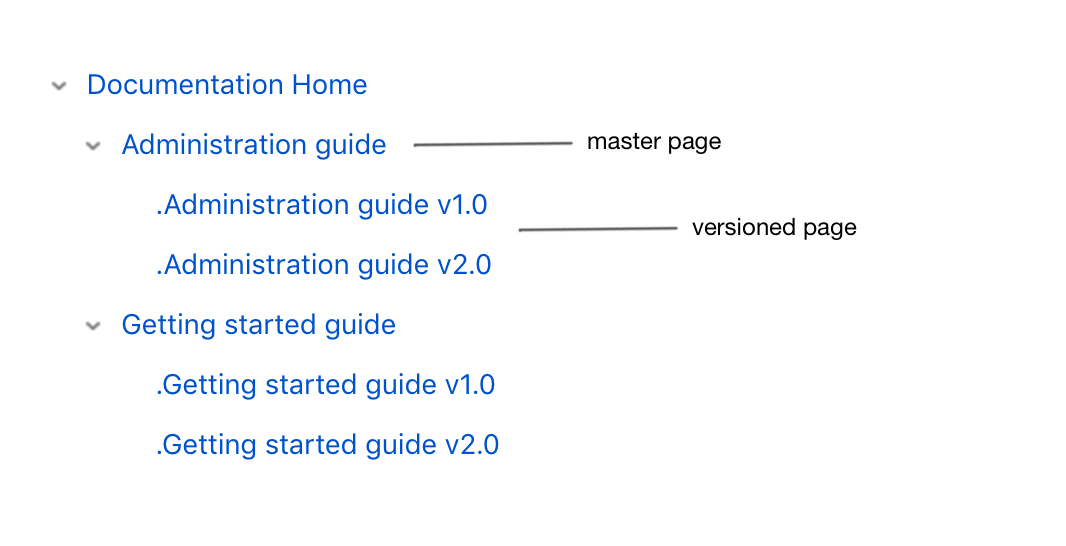Does your documentation space contain several top-level pages? This might indicate that some pages belong to your official documentation, while others are internal management pages or used for content reuse. If you notice multiple top-level pages, or already know your space contains pages you don’t want to include in your official documentation, we recommend reviewing and categorizing these pages accordingly.
Label Pages Based on Their Use
In a documentation space, pages typically fall into three main categories. When converting your space to Scroll Documents, it’s important to identify which versions and pages should be included in the new structure. If some pages serve different purposes, you may want to handle them differently during the conversion. To support this, we recommend categorizing your pages using specific page labels. Here are our definitions and suggestions:
|
Page category |
Definition |
Label |
Page tree structure after conversion |
|---|---|---|---|
|
Documentation Pages |
These are the pages that constitute your official documentation. They are essential for communicating information to your audience and typically don't require any special labels. |
no label |
Pages without any special labels will be converted as part of your versioned Scroll Documents documentation. |
|
Included pages |
These are pages included within the same space, often used for content reuse. To identify them, we suggest labeling them with "vsndoc-include-library". This does not have to be done for pages included through Scroll Versions and Scroll Translations Include Library feature. |
vsndoc-include-library |
For pages dedicated to content reuse, we recommend placing them at the same level as your Working version, outside of your document. This can be achieved by labeling them with "vsndoc-include-library" and selecting the option"Resolve (Excerpt) Include macros across all saved versions" during conversion. |
|
Management pages |
These pages are used for internal management purposes, such as displaying open tasks, organizing content by label, etc. To differentiate them, we recommend labeling them with "vsndoc-no-documentation". |
vsndoc-no-documentation |
Pages used for internal purposes, like reports, are recommended to be converted into the Working version of your document. After conversion, you can move them outside of your document. To achieve this, add the "vsndoc-no-documentation" label to these pages and uncheck the option "Migrate 'vsndoc-no-documentation' labeled page trees to all saved version" |
How to Apply the Page Labels
When labeling pages, the process differs based on whether the page is versioned or unversioned, or if it's a standard Confluence page.
If you have a page tree of reused pages or management pages, it is sufficient to place the label on the parent page of that page tree.
For unversioned or normal Confluence pages:
-
Navigate to the single page or parent page of the page tree and apply the relevant label.
For versioned pages managed by Scroll Versions:
-
Navigate to the relevant page.
-
Click on the page tools icon (•••) > select View in Hierarchy to access the reorder page tree. The selected page, along with its master page and dot pages, should appear unfolded.
-
Click on the master page to access the Public view, see screenshot below for reference:

-
Click on the label icon.
-
Type in the label name and click Add.
This approach ensures that your documentation is organized efficiently and that only relevant content is included in your new document.
